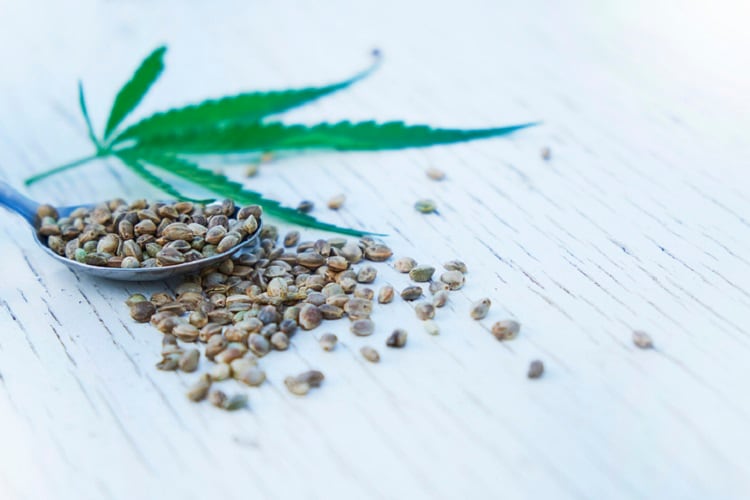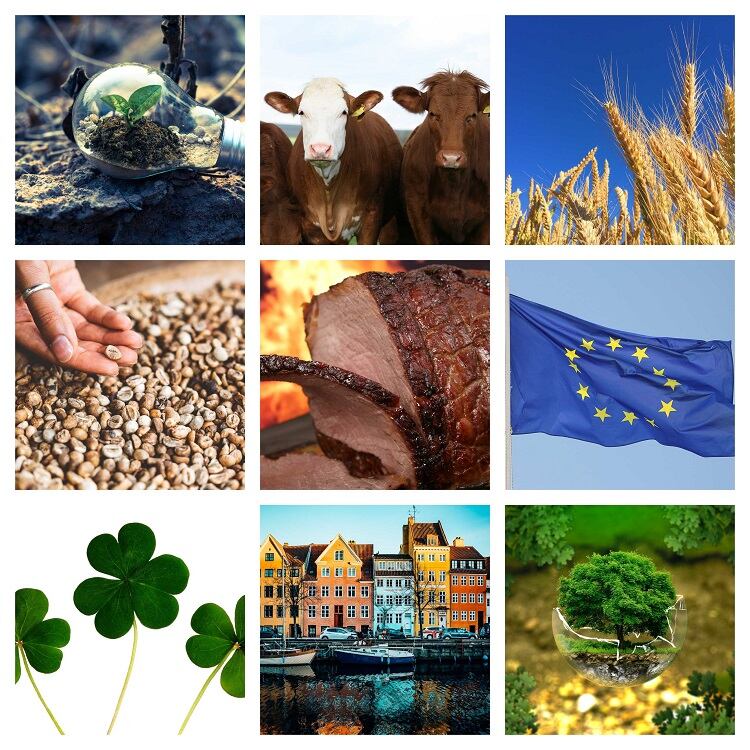Our latest news and views from Brussels looks at food waste regulation in France, sugar reduction in the UK, excessive salt intake in Spain, and EFSA’s concern over THC levels in hemp products.

Our latest news and views from Brussels looks at food waste regulation in France, sugar reduction in the UK, excessive salt intake in Spain, and EFSA’s concern over THC levels in hemp products.

The European Food Safety Authority (EFSA) has raised concerns that delta-9-tetrahydrocannabinol levels in hemp products exceed the safety limit.
Delta-9-tetrahydrocannabinol (Delta 9 -THC) is a naturally occurring psychoactive compound derived from the hemp plant Cannabis sativa. The cannabinoid molecule is recognised as the main psychoactive ingredient – i.e the substance responsible for the marijuana ‘high’ – in cannabis.
According to the EFSA’s acute reference dose – established in 2015 – the safety limit for Delta 9-THC is set at 1 µg/body weight per day.
In a study published 7 January 2020, the EFSA looked at ‘standard’ food categories used as proxies for the consumption of hemp and hemp products. A total of 588 samples were assessed, covering hemp seeds, hemp oils, tea, breakfast cereals, bread and rolls made from hemp flower, cereal bars, chocolate products, energy drinks, beers, and energy drinks.
The EFSA said that further research is required to obtain sensitive, validated, and D9-THC specific methods, to be translated to reliable official methods.
The agency has also suggested studies look at the stability of D9-THC, as well as the conversion of the compound during food processing. Investigating the carry-offer of D9-THC in the food chain, where animals are fed with hemp products, would also be beneficial, it added.
FoodNavigator is co-hosting a two-day CBD Global Summit in London, 16-17 March 2020. The event wants to bring together the science, business and regulation governing CBD to look at how businesses can unlock this important market opportunity. For more details, to check out our advanced programmed, and view confirmed speakers, visit the CBD Global Summit website.

Image source: GettyImages/yavdat

A study coordinated by the Spanish Nutrition Foundation (FEN) has revealed that sodium intake from food and beverages in Spain exceeds the World Health Organization’s (WHO) recommended limit.
According to the findings, Spaniards ingest a daily total of 2,025mg of sodium on average from food and beverages. These figures exceed the WHO’s recommendation of 2,000mg of salt per day from food and beverages.
Overall salt intake was recorded at 5,060mg daily – higher than the recommended limit of 5,000mg.
Findings also revealed that salt intake was significantly higher in man than in women.
In the study, published in Nutrients, it was found that primary sources of sodium were coming from meats, cereals, dairy products, and seafood.
Breaking salt intake into meals, dinner appears to contribute the most daily intake of sodium, at around 30-37% of the total intake. Lunch provides 25-34%, and mid-morning and afternoon snacks account for 5-11% or the total sodium intake.
FEN president Gregorio Varela-Moreiras, who is also a professor of nutrition and bromatology at the Universidad San Pablo-CEU, has stressed that the excess salt calculated does not take into account supplementary salt – which may be added during the cooking process or at the table.
Image source: GettyImages/art-4-art

France’s minister of agriculture and food, Didier Guillaume, has extended the nation’s food waste law to include catering and agri-food sectors.
As of 1 January, private catering operators that provide 3,000 meals per day or more, and private agri-food companies with a minimum annual turnover of €30m, are required to support anti-food waste regulations, noted the minister earlier this week.
Such businesses must ensure that unsold food, which is still good to eat, is made available for consumption. Businesses that do not comply, will be fined €3,750.
Supermarkets and government-funded catering organisations have been governed by this regulation since 2016.
Image source: GettyImages/SaskiaAcht

The European Food Safety Authority (EFSA) has raised concerns regarding space restriction in conventional rabbit cages.
Rabbits are the second most farmed species in the EU in terms of numbers. In the absence of species-specific legislation protecting the welfare of farmed rabbits in the EU, the EFSA has compared different rabbit housing systems in use.
Most rabbit farming in the EU takes place in five Member States: France, Hungary, Italy, Portugal and Spain. And according to the EFSA’s finding, farming practices not only vary widely between these countries, but also within them.
In the survey, the government agency considered a range of animal welfare issues, including restricted movement, resting problems, prolonged thirst or hunger, thermal stress, and skin disorders.
The resulting scientific opinion focuses on six housing systems: conventional cages; structurally enriched cages; elevated pens; floor pens; outdoor/partially outdoor systems; and organic systems.
The main conclusions are that:
- The welfare of adult rabbits is lower in conventional cages than in the five other housing systems (with a certainty of 66-99%). The most significant welfare consequence is restricted movement;
- The welfare of unweaned rabbits (kits) is lowest in outdoor systems and highest in elevated pens (certainty 66-99%). The highest welfare impact on kits raised in outdoor systems is thermal stress;
- Organic systems are generally good.
Image source: GettyImages/sarahmariebuhr

Fresh research analysing the sugar content of yogurt products in the UK between 2016 and 2019 has revealed a median decrease of 13%. The dairy alternative category, however, is yet to follow suit.
In an effort to reduce obesity rates, Public Health England (PHE) challenged food manufacturers to cut sugar levels in the food categories that contribute the most sugar to children’s diets. The sugar reduction scheme was launched in 2016, and called for a 20% reduction in sugar by 2020.
Sweetened yogurt products are a significant source of free sugars, and as such, yogurt and fromage frais were also targeted by the reformulation scheme, alongside biscuits, breakfast cereals, and confectionery.
As PHE’s deadline approaches, how successful have food manufacturers been in reducing sugar content in yogurt products? According to fresh research from the University of Leeds, ‘significant’ reduction in sugar levels have been observed in most yogurt categories.
The team of researchers from the University of Leeds surveyed yogurt products available in five major supermarkets in the UK: Asda, Morrisons, Sainsbury’s, Tesco, and Waitrose.
Product information was collected for a total of 893 unique yogurt, fromage frais, and dairy dessert products. Biggest cuts were seen in children’s, drinks, and fruit yoghurts. Overall, products classed as ‘low sugar’ – containing less than five grams of sugar per 100 grams – increased from 9% of items on sale in 2016 to 15% in 2019.
Findings also revealed that the dairy alternatives category was the only category with a net increase in sugar contents. While there was not a ‘significant difference’ in sugar content for this category, lead author Dr Bernadette Moore cautioned against the belief that all dairy-free products are ‘healthy’.
“Movements such as Veganuary may encourage people to reconsider their eating habits, but it’s important that people are aware that dairy alternatives may be an unrecognised source of added sugar to their diet.
“Because dairy alternatives do not have lactose, which is a naturally-occurring sugar, the total sugar content comes entirely from sweeteners. Generally, added sugars are considered to be worse for teeth and health.”
Image source: GettyImages/bogdandreava




